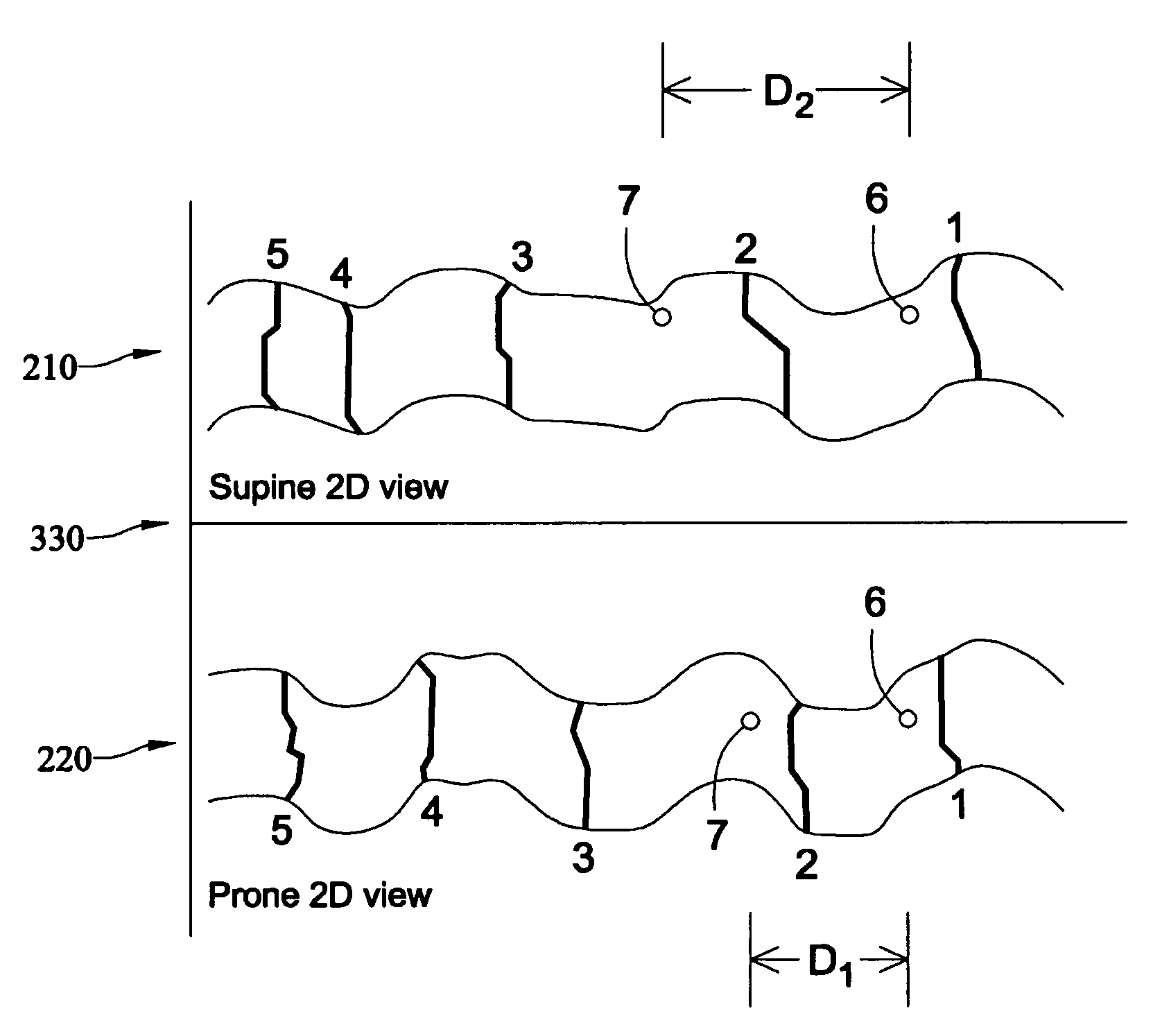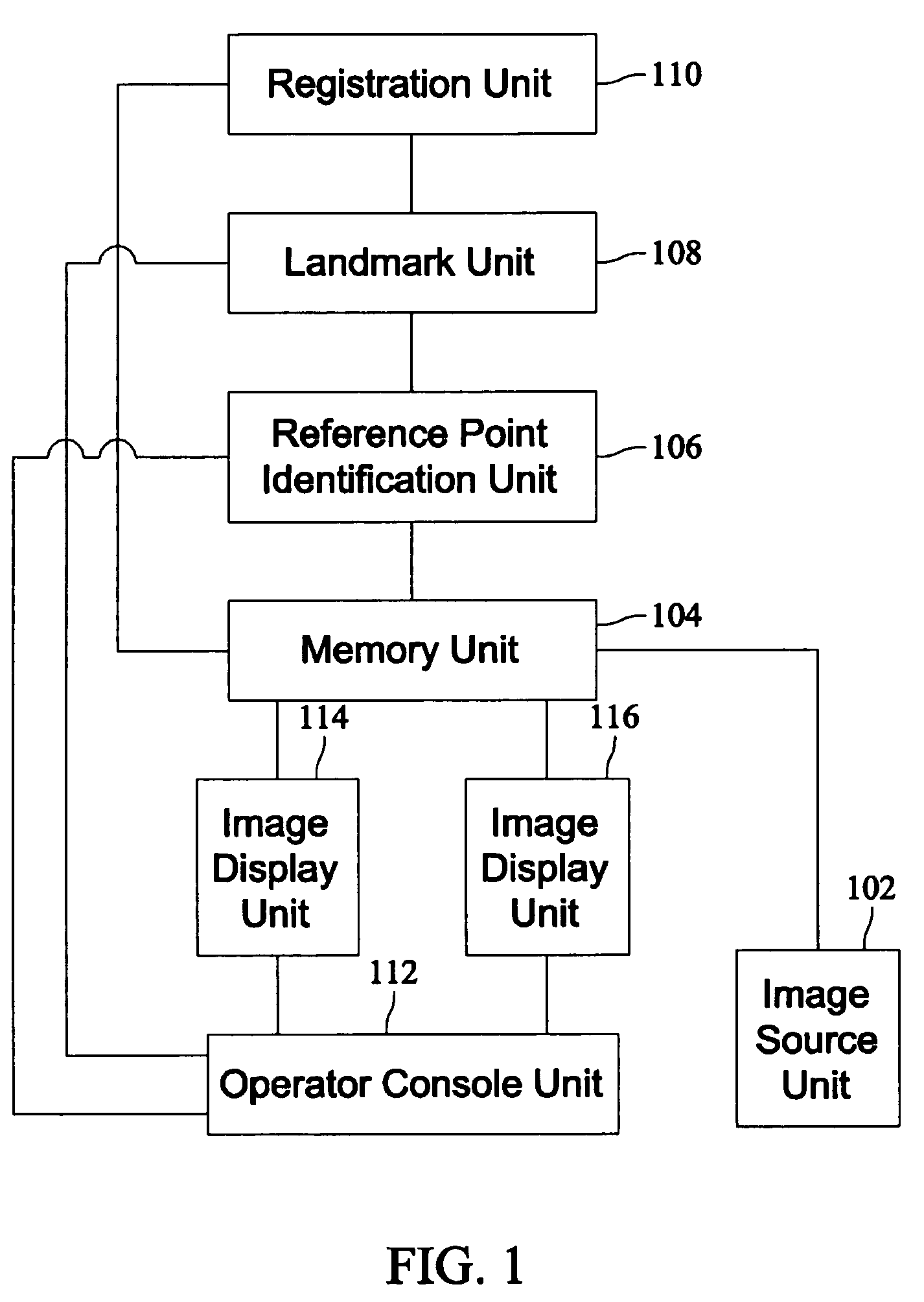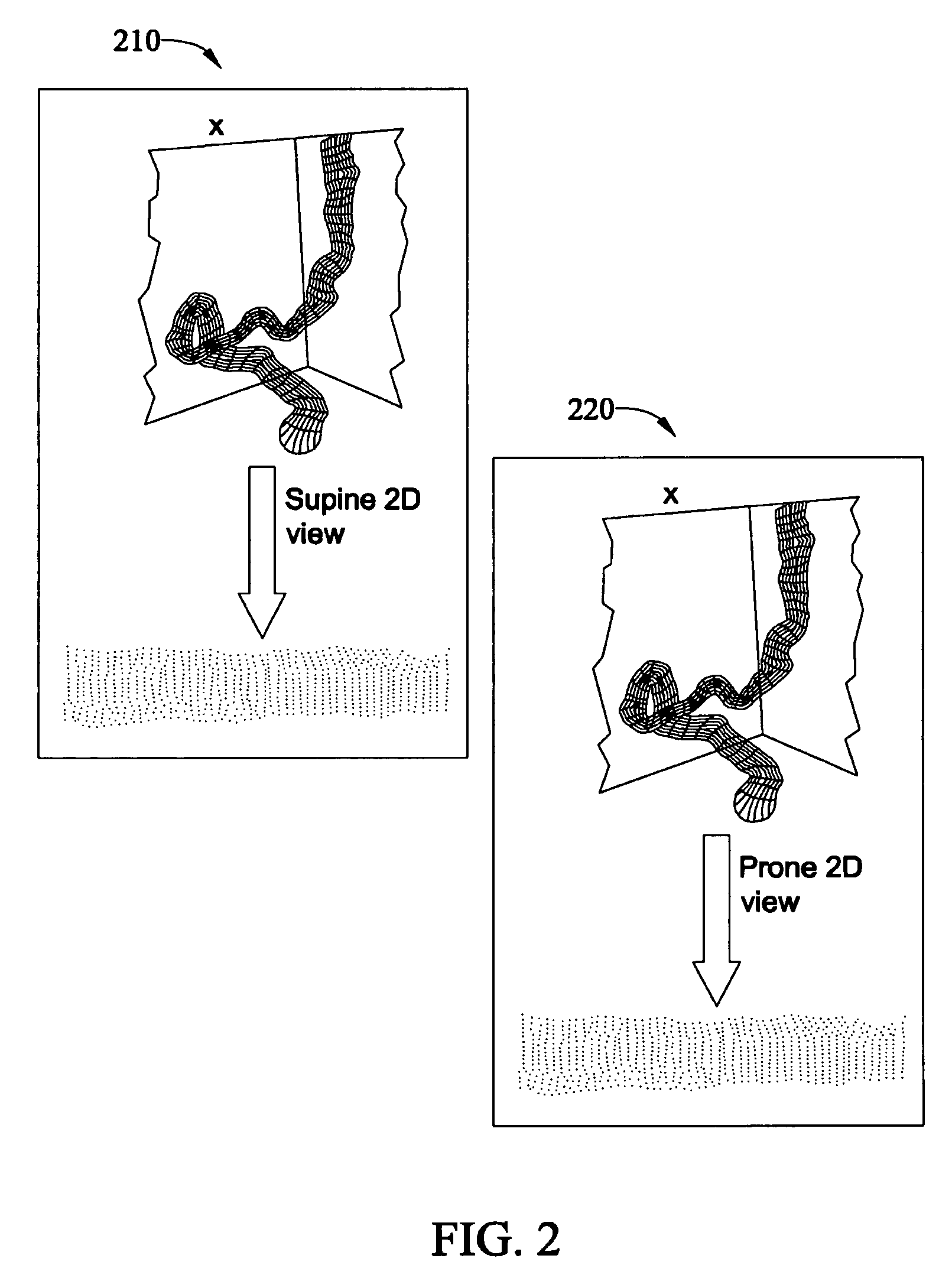Method and apparatus for synchronizing corresponding landmarks among a plurality of images
a landmark and image technology, applied in image analysis, image enhancement, instruments, etc., can solve the problems of not all forms of cancerous growths are easily detected, abnormal cells cannot be controlled, and defects may be detected in objects, so as to reduce the interpretation time of ctc cases, increase the detection rate of potentially cancerous polyps, and navigate smoothly
- Summary
- Abstract
- Description
- Claims
- Application Information
AI Technical Summary
Benefits of technology
Problems solved by technology
Method used
Image
Examples
Embodiment Construction
[0026]FIG. 1 is a schematic block diagram of an image processing system 100 in accordance with an embodiment of the present invention. The system 100 includes an image source unit 102. The image source unit 102 contains a first image set 103 and a second image set 105 (not shown) of an object, such as, but not limited to, an elastic object. The system 100 also contains a memory unit 104, a reference point identification unit 106, a landmark unit 108, a registration unit 110, an operator console 112, an image display unit 114, and an image display unit 116.
[0027]In an embodiment, the system 100 preprocesses image data 103, 105 and then makes the processed image data 103, 105 available for display and navigation by a user. Additionally or alternatively, the image data 103, 105 is available for display prior to being processed by the system 100. The image source unit 102 provides the image data 103, 105 for processing to the memory unit 104. The memory unit 104 stores the image data 10...
PUM
 Login to View More
Login to View More Abstract
Description
Claims
Application Information
 Login to View More
Login to View More - R&D
- Intellectual Property
- Life Sciences
- Materials
- Tech Scout
- Unparalleled Data Quality
- Higher Quality Content
- 60% Fewer Hallucinations
Browse by: Latest US Patents, China's latest patents, Technical Efficacy Thesaurus, Application Domain, Technology Topic, Popular Technical Reports.
© 2025 PatSnap. All rights reserved.Legal|Privacy policy|Modern Slavery Act Transparency Statement|Sitemap|About US| Contact US: help@patsnap.com



